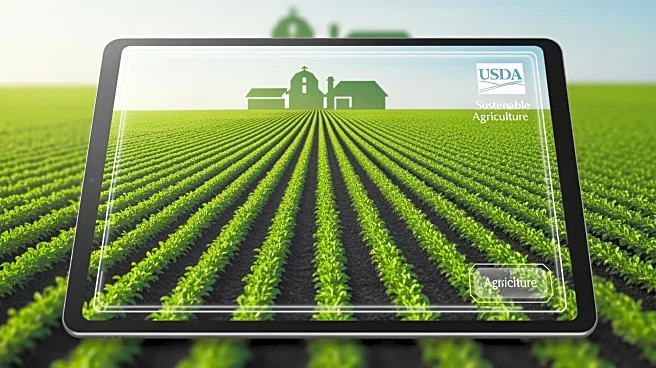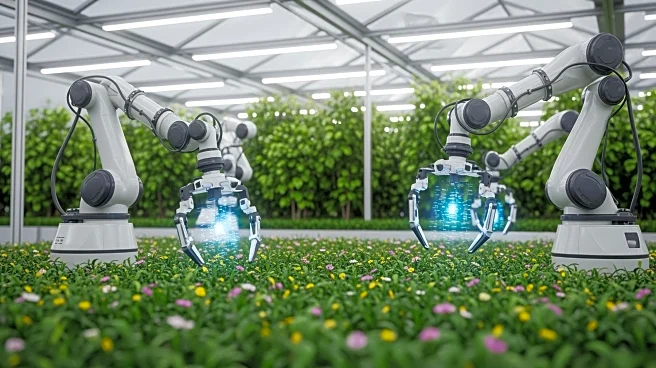What's Happening?
AgXeed has launched the updated AgBot T2, a tracked tractor with enhanced power and design features. The new 7 Series includes a longitudinally mounted four-cylinder engine and mechanically driven PTO
shafts, offering more power and a simpler construction. The AgBot T2 is equipped with additional cameras for remote monitoring and features a larger generator for smoother operation. The machine will be showcased at the Agritechnica trade fair, with a starting price of €295,000. AgXeed also plans to introduce the VCU, a Vehicle Control Unit, for semi-autonomous tractor operation.
Why It's Important?
The launch of the AgBot T2 represents a significant advancement in autonomous farming technology, offering increased power and efficiency for agricultural operations. This development is crucial for the farming industry as it seeks to improve productivity and reduce labor costs through automation. The introduction of the VCU for semi-autonomous operation further highlights AgXeed's commitment to advancing agricultural technology, potentially leading to more widespread adoption of autonomous systems in farming, which could transform traditional farming practices.
What's Next?
AgXeed's new AgBot T2 and VCU are expected to drive further innovation in the agricultural sector. As these technologies gain traction, there may be increased interest from farmers and agricultural businesses looking to enhance efficiency and reduce operational costs. AgXeed's focus on achieving Level 4 autonomy suggests future developments in fully autonomous farming equipment, which could revolutionize the industry by enabling more precise and efficient farming practices.
Beyond the Headlines
The introduction of AgXeed's enhanced AgBot T2 and VCU may have broader implications for the agricultural industry, including potential shifts in labor dynamics and farming practices. As automation becomes more prevalent, there could be changes in workforce requirements, with a greater emphasis on technical skills for managing autonomous systems. This could also influence agricultural policy and investment decisions, as governments and businesses seek to support technological advancements that improve sustainability and productivity.











